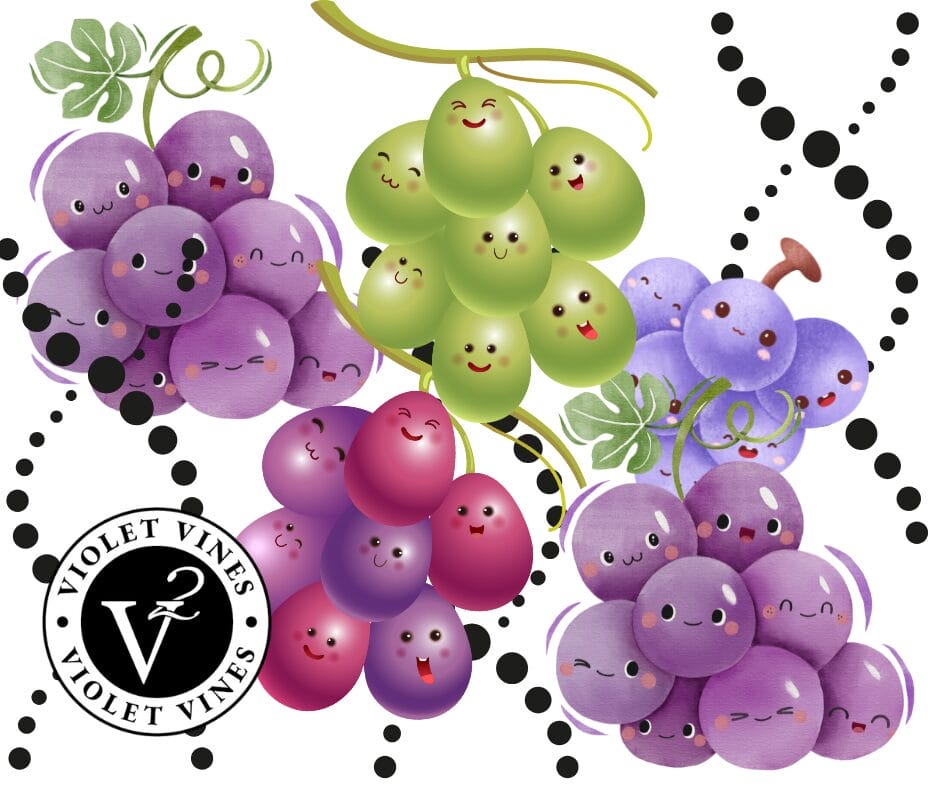Exploring the Flavor Profiles of Pinot Noir Clones in Oregon
March 18, 2025
By Brian Zawada
Oregon’s Willamette Valley has earned its reputation as one of the premier Pinot noir winegrowing regions in the world, thanks in part to its diverse soils, cool climate, and an array of Pinot noir clones that contribute to the complexity of its wines. Among these, the Dijon clones (113, 114, 115, 667, 777 and 828), as well as the historic iconic Pommard and Wadenswil selections, each bring unique characteristics to the glass. When paired with Oregon’s two dominant soil type – sedimentary and volcanic Jory – the expression of these clones can shift dramatically.
Let’s explore how each clone we’ve planted and/or produced performs in Oregon’s terroir and what makes them distinct.
If you want to learn a little more about Oregon soils, take a look at this blog written previously.
Or if you want a primer on what a “clone” means, check this blog out.
Wadenswil: The Swiss Elegance
Originally from Switzerland (which ironically is where I am as I write this blog!), Wadenswil was believed to be the first Pinot noir clone planted in Oregon. It is known for its bright acidity, red fruit, and a distinctive floral and spice profile.
Soil Influence:
- Sedimentary: Produces a slightly darker, more structured wine with notes of black raspberry, anise, and savory herbs.
- Jory: Enhances the aromatic lift, highlighting rose petal, red cherry, and a subtle tea-like character.
@ Violet Vines: We planted Wadenswil in 2020 in Sedimentary soils on our estate vineyard in the McMinnville AVA. We called it the Hinterlands block. Our first harvest was 2023 and it contributes to our 2023 Estate Pinot Noir and the 2023 Willamette Valley Pinot Noir.
Pommard: The Workhorse Clone
One of the oldest and most respected Pinot Noir clones in Oregon, Pommard originated from Burgundy and was brought to the U.S. in the 1950s and is believed to be the second Pinot noir clone planted in Oregon. It is known for its powerful structure, intense red and black fruit, and earthy complexity.
Soil Influence:
- Sedimentary: Produces a bolder, more rustic expression with firm tannins and black cherry, dried herbs, and forest floor notes.
- Jory: Brings out red fruit, floral aromatics, and a silkier tannin structure, allowing for more finesse and elegance.
@ Violet Vines: We have two Pommard blocks in our estate vineyard in the McMinnville AVA. The Cooper Block (primarily sedimentary soil) was planted in 2008 and the Walker Block was planted in 2022 (primarily Jory soil). We produced our first Cooper Block Single Clone Pommard in 2022 and the second in 2023, but it contributes to all of our estate bottlings and the 2023 Willamette Valley Pinot Noir. In 2023, we purchased some Pommard from our friends at Roshni Vineyard and it is the source for our 2023 Sparking Red (and also a contributor to the 2023 Willamette Valley Pinot Noir). And lastly, we also purchased some Pommard from the Chehalem Mountains AVA and like Roshni, it contributes mightily to the 2023 Willamette Valley Pinot Noir
Dijon Clones: Precision and Elegance
Originally developed in Burgundy and introduced to Oregon in the 1980s and 1990s, Dijon clones are prized for their ability to ripen fully in cooler climates, offering nuanced fruit, spice, and structure. We’re going to cover six of these clones in this blog.
Dijon 113
Profile: Light and floral, emphasizing red fruit, violets, and subtle earthiness. Tends to be more delicate than other Dijon clones.
Soil Influence:
- Sedimentary: Adds depth to the fruit profile, enhancing raspberry and red cherry notes while maintaining a bright, lifted finish.
- Jory: Brings out floral and savory elements, adding a subtle minerality and a silky texture.
@ Violet Vines: We first worked with this clone during the 2022 harvest. It will be part of our 24-month barrel aged Yamill-Carlton AVA Pinot noir which will be bottled in December 2025.
Dijon 114
Profile: Bright red fruit with a balance of earth and spice. More linear and structured than 113 but still on the delicate side.
Soil Influence:
- Sedimentary: Creates a slightly weightier mid-palate with more red currant and dried herbal notes.
- Jory: Accentuates a refined texture and brings out a red tea-like quality.
@ Violet Vines: Like the Clone 113, we first worked with this clone during the 2022 harvest. It will be part of our 24-month barrel aged Yamill-Carlton AVA Pinot noir which will be bottled in December 2025. Additionally, we planted this clone on our estate vineyard in the McMinnville AVA in the Spring of 2023 (it’s called the Kennedy Mountain Block, the highest point on our estate vineyard). We expect the first harvest in 2027.
Dijon 115
Profile: One of the most widely planted Dijon clones, known for its bright fruit, balanced tannins, and silky texture. Notes of ripe cherry, raspberry, and subtle spice.
Soil Influence:
- Sedimentary: Produces a denser wine with deeper fruit tones and a slightly more tannic grip.
- Jory: Highlights purity of fruit and floral aromatics with a smoother, softer mouthfeel.
@ Violet Vines: Arguably my favorite clone, we have three Clone 115 blocks at our estate vineyard in the McMinnville AVA. The Andrew Block (sedimentary and Jory soils) always features prominently in our Ultra Violet reserves, as well as single clone bottlings in 2021 and 2022. We also planted the Elk’s Envy Block (Jory soil) in 2020 and it is the source of our 2022 Blanc de Noir (still aging on its lees) and a contributor to the 2023 Estate Pinot Noir and the 2023 Willamette Valley Pinot noir. The Oskar Block (Jory soil), also planted in 2020, experienced its first harvest in 2024 and is currently in barrel!
Dijon 667
Profile: Dark fruit-driven, structured, and bold. Common notes include black cherry, plum, baking spices, and cocoa.
Soil Influence:
- Sedimentary: Produces richer, more intense wines with a velvety texture. Tannin structure can be slightly grippy, giving the wine longevity.
- Jory: Enhances the spice character, lending an elegant, lifted quality with more minerality.
@ Violet Vines: We first worked with this clone during the 2024 harvest. It will be part of collaborative project with our friends at Red Electric Wines (Ribbon Ridge AVA) and will be bottled in December 2025!
Dijon 777
Profile: A favorite among winemakers for its dark fruit, concentration, and refined tannins. Often presents blackberry, dark cherry, and baking spice.
Soil Influence:
- Sedimentary: Enhances richness and structure, adding darker fruit character and a more pronounced spice profile.
- Jory: Brings an ethereal, lifted quality with more floral and red fruit tones.
@ Violet Vines: Oh the Clone 777, where to begin! For years, I thought of it as a blending grape, a key “ingredient” of our Ultra Violet and Estate Pinot noirs, all coming from the Taylor Block (planted in 2008 in sedimentary and Jory soils). We also sourced Clone 777 from the Eola-Amity Hills AVA for our 2021 and 2022 Rose of Pinot Noir and from the McMinnville AVA for our 2023 Rose. In 2023, we purchased Clone 777 from the Chehalem Mountains AVA and bottled our first Single Clone 777 bottling, which is amazing! We called this wine “Taylor”.
Dijon 828
Profile: A bit more muscular than other Dijon clones, often showing dark fruit, dried herbs, and a mineral streak.
Soil Influence:
- Sedimentary: Emphasizes darker fruit, structure, and more pronounced tannins.
- Jory: Lends elegance and an iron-like minerality with a softer, more integrated tannin Dijon Clones: Precision and Elegance
@ Violet Vines: We planted Clone 828 in 2020 in Jory soils on our estate vineyard in the McMinnville AVA. We called it the Renegade Block, which pays respect to the legend that it was originally smuggled into the United States from France. Our first harvest was 2023 and it contributes to our 2023 Estate Pinot Noir and the 2023 Willamette Valley Pinot Noir, and fingers-crossed, it will be a Single Clone bottling in the 2024 vintage.
Final Thoughts: Blending Clones for Complexity
Most Oregon Pinot Noirs are not single-clone wines but instead use a blend of clones to create balance and complexity. For example, combining the power of Pommard with the elegance of Dijon 777 and the floral lift of Wadenswil can result in a wine with layers of fruit, spice, and structure.
Furthermore, Oregon’s terroir plays a defining role in shaping these clones. While sedimentary soils tend to produce darker, more structured wines with earth-driven complexity, Jory soils highlight elegance, floral aromatics, and a refined texture. Understanding the interplay between clone and site is crucial for both winemakers and Pinot Noir enthusiasts seeking to explore the diverse expressions of Oregon’s most celebrated grape.
For those looking to truly experience these nuances, tasting single-clone bottlings from different soil types can be an eye-opening journey into the depth and diversity of Oregon Pinot Noir.

